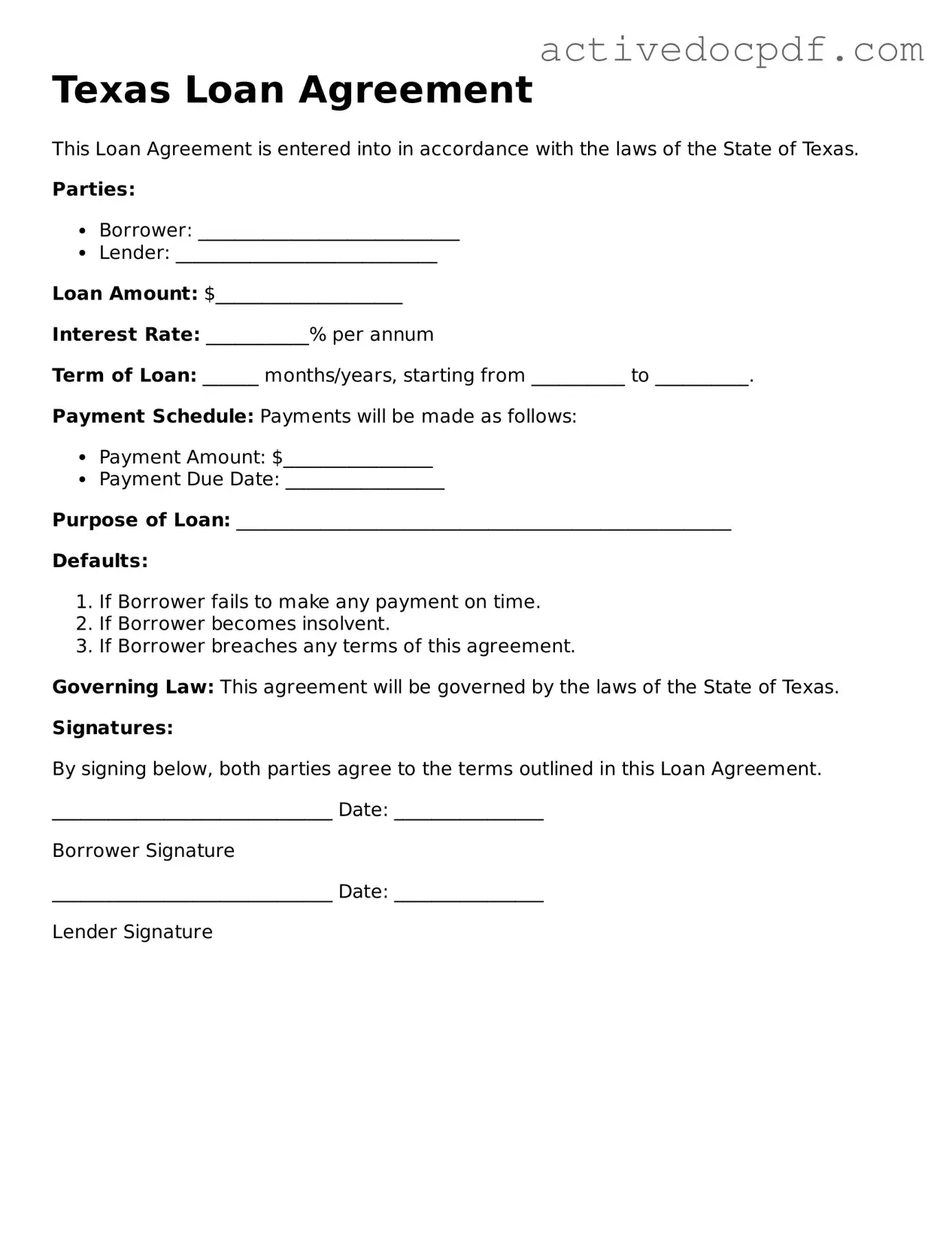A Texas Loan Agreement form is a legal document used to outline the terms and conditions of a loan between a lender and a borrower in the state of Texas. This form helps ensure that both parties understand their rights and obligations, providing clarity and protection in the lending process.
Who needs a Texas Loan Agreement?
Anyone involved in a lending transaction in Texas should consider using a Loan Agreement. This includes individuals, businesses, and organizations that either lend money or borrow funds. Having a formal agreement can help prevent misunderstandings and disputes down the line.
What should be included in a Texas Loan Agreement?
A comprehensive Texas Loan Agreement typically includes the following key elements:
-
Loan Amount:
The total sum being borrowed.
-
Interest Rate:
The rate at which interest will accrue on the loan.
-
Repayment Terms:
A detailed schedule outlining how and when the borrower will repay the loan.
-
Default Terms:
Conditions that define what happens if the borrower fails to repay the loan as agreed.
-
Signatures:
Both parties must sign the agreement to make it legally binding.
Is a Texas Loan Agreement legally binding?
Yes, a Texas Loan Agreement is legally binding as long as it meets the necessary legal requirements. This includes mutual consent from both parties, clear terms, and the intention to create a legal obligation. However, it’s always wise to consult with a legal professional to ensure that your agreement is enforceable.
Can I modify a Texas Loan Agreement after it has been signed?
Yes, modifications can be made to a Texas Loan Agreement after it has been signed, but both parties must agree to the changes. It’s best to document any modifications in writing and have both parties sign the updated agreement to avoid any confusion in the future.
What happens if the borrower defaults on the loan?
If the borrower defaults, the lender may have several options, depending on the terms outlined in the Loan Agreement. These options can include:
-
Charging late fees or penalties.
-
Initiating legal action to recover the owed amount.
-
Seizing collateral if the loan was secured.
It’s important to understand these terms before entering into a loan agreement.
Do I need a lawyer to create a Texas Loan Agreement?
While it’s not legally required to have a lawyer draft a Texas Loan Agreement, consulting with one can provide valuable guidance. A lawyer can help ensure that the agreement complies with Texas laws and adequately protects your interests.
Are there any specific Texas laws governing loan agreements?
Yes, Texas has specific laws that govern loan agreements, including regulations on interest rates, lending practices, and consumer protection. Familiarizing yourself with these laws can help you create a compliant and effective loan agreement.
Where can I find a Texas Loan Agreement template?
Many resources are available online for finding Texas Loan Agreement templates. Websites that specialize in legal documents often provide customizable templates. However, always review any template carefully and consider seeking legal advice to ensure it meets your specific needs.
What should I do if I have a dispute regarding a Texas Loan Agreement?
If a dispute arises regarding a Texas Loan Agreement, the first step is to communicate directly with the other party to try and resolve the issue amicably. If that fails, mediation or arbitration may be options to consider. In some cases, legal action may be necessary. Consulting with a lawyer can help you understand your rights and the best course of action.
